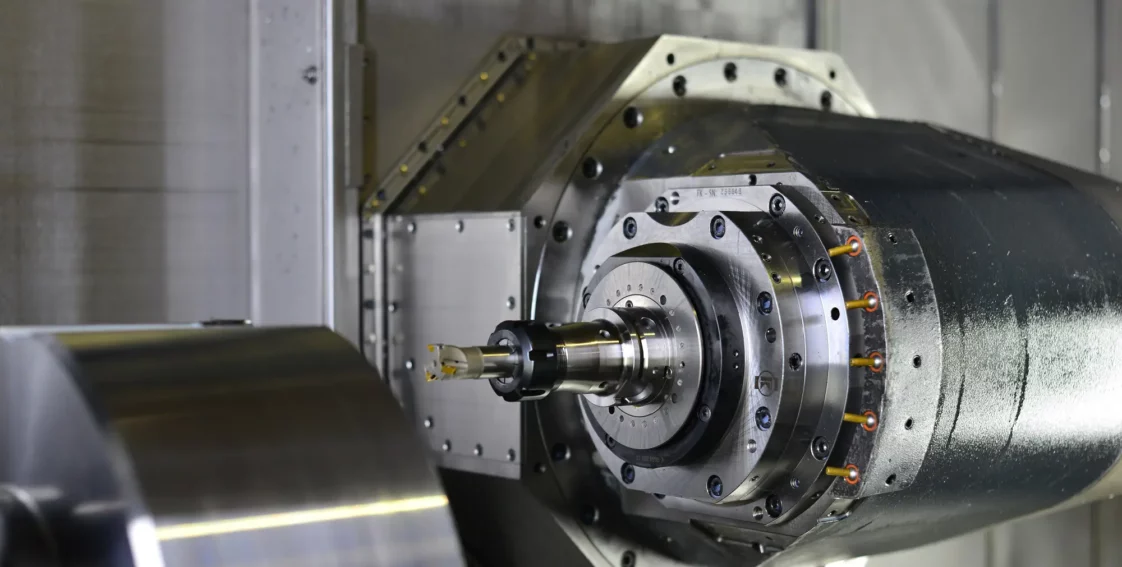
When to Repair Versus Replace a CNC Spindle
In CNC manufacturing, timely response to spindle damage is critical. Neglecting early signs of wear or malfunction can lead to severe breakdowns, causing extended downtime and substantial costs.
The decision to repair or replace a spindle should be made swiftly and with a clear understanding of the implications for machine performance and operational efficiency.
In this article, we’ll cover the primary signs that indicate CNC spindle failure and provide guidelines on when to repair or replace your spindle.
Signs of CNC Spindle Failure
Common signs of failure in a CNC spindle include:
- Unusual or excessive vibration during operation.
- Sounds such as grinding or screeching, indicating bearing issues.
- Inability to maintain precision in machining tasks.
- The spindle becomes excessively hot during operation.
- Irregular tool movement resulting in poor surface finish.
- Failure to maintain desired machining speeds.
- Specific CNC error codes (will vary based on manufacturer).
- The spindle requires more power than usual for standard operations.
General Troubleshooting Guidelines
If you’ve noticed any of the followings signs listed above, please follow these guidelines:
- Increased/Excessive Vibration
- Tighten any loose components.
- Check for unbalanced tools or fixtures.
- Inspect the spindle for any physical damage.
- Unusual Noises
- Inspect and replace worn or damaged bearings if needed.
- Decreased Accuracy
- Calibrate the machine.
- Check for tool wear.
- Overheating
- Verify spindle cooling systems are functioning.
- Reduce operational load.
- Tool Chatter
- Adjust cutting parameters.
- Examine tooling for damage or misalignment.
- Reduced Cutting Speeds
- See if the spindle is receiving adequate power.
- Inspect drive systems for any faults.
- Power Draw Issues
- Monitor and record power usage to detect anomalies.
- Ensure electrical connections are secure and intact.
It’s also critical to ensure the spindle is properly lubricated according to the manufacturer’s guidelines and to routinely inspect for contamination, like dust or metal shavings, that could affect spindle performance. Always ensure the machine is operating within the recommended speed and feed rates—overworking the spindle will cause more wear and tear, ultimately resulting in catastrophic failure. Lastly, routine calibration is necessary to ensure spindle accuracy, so always keep thorough maintenance records to know when calibration is due.
Repairing Versus Replacing
Repairing
Repairing a CNC spindle is often the most cost-effective solution, as most spindle damage can be fixed. Common repairs include bearing replacement, balancing, and correcting issues with tool interface. Repairs can be completed more quickly than replacements, minimizing downtime. Repair services also include diagnostic tests to ensure the spindle functions per application requirements.
Please read this article to learn more about the steps involved in spindle repair.
Replacing
Replacing a spindle is only recommended if the spindle is beyond repair or if repairing would not be economically viable. Replacement requires more investment in terms of time and resources, including installation and calibration, and can be challenging when dealing with discontinued models. Most CNC spindle specialists will recommend repairs over direct OEM replacements.
Fix CNC Spindle Damage Today
If you need help finding the most cost-effective solution to fixing CNC spindle damage, always contact a specialist like Superior Spindle.
We’ve been helping manufacturers in the automotive, aerospace, military/defense, medical, and many other sectors repair and retrofit damaged spindles for many years. We follow a strict ISO-certified repair process to ensure quality and perform all repairs and inspections in a Class 2/Class 10,000 HEPA climate-controlled cleanroom to eliminate potential contamination.
Our spindle repair services include vibration analysis, ISO and DIN standard taper grinding, bearing repairs, and industry-leading engineering recommendations. All repairs are performed in our state-of-the-art, U.S.-based facility. The average timeline for spindle repairs is between 10 and 14 days, but we also provide expedited repairs based on part availability.
Please contact us today to get started with a quote.
